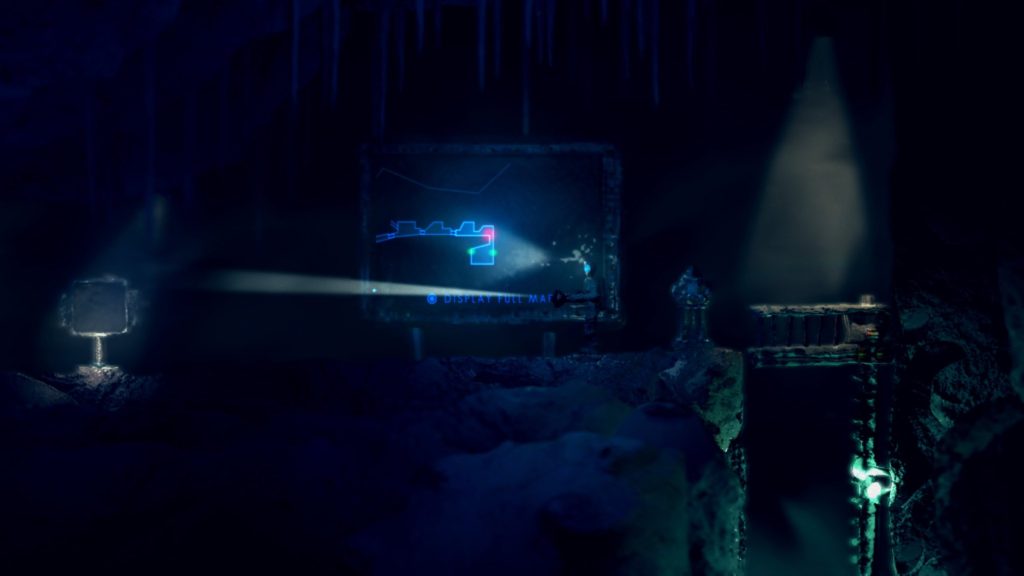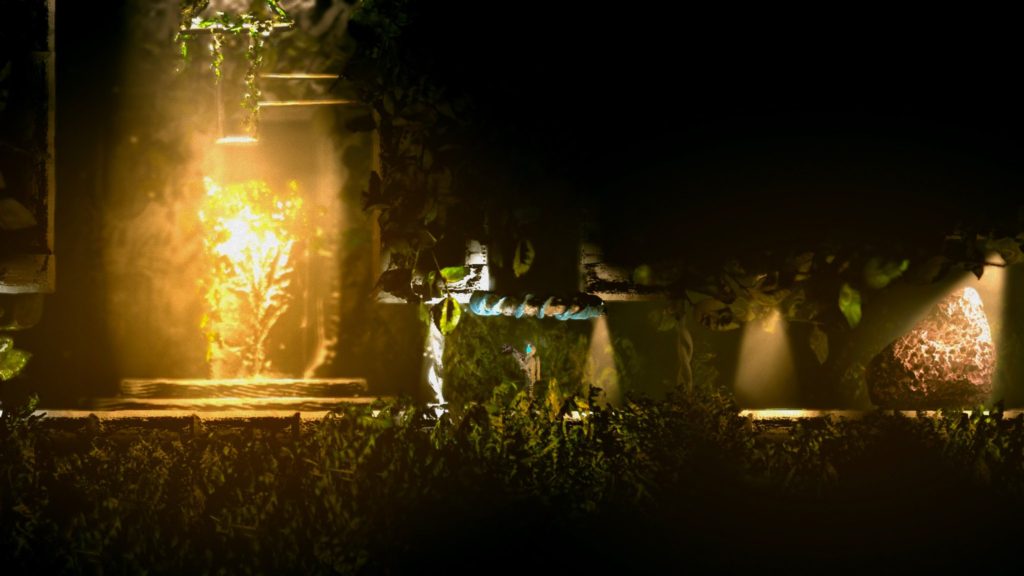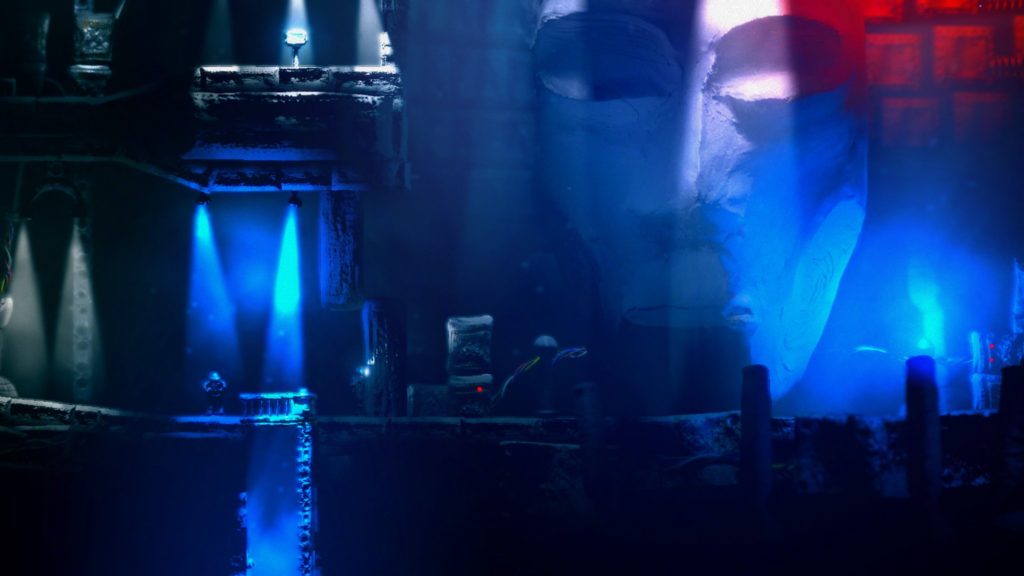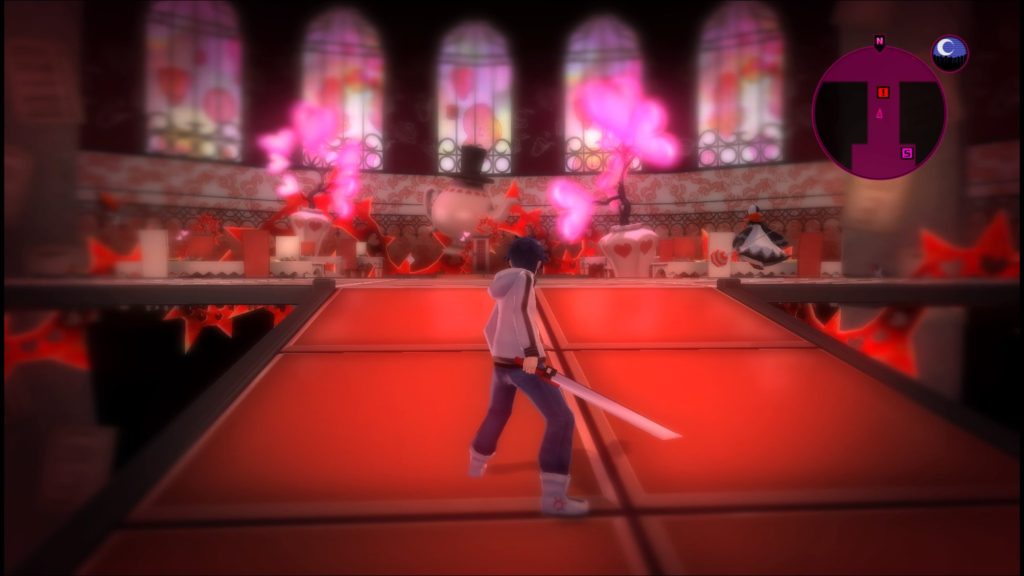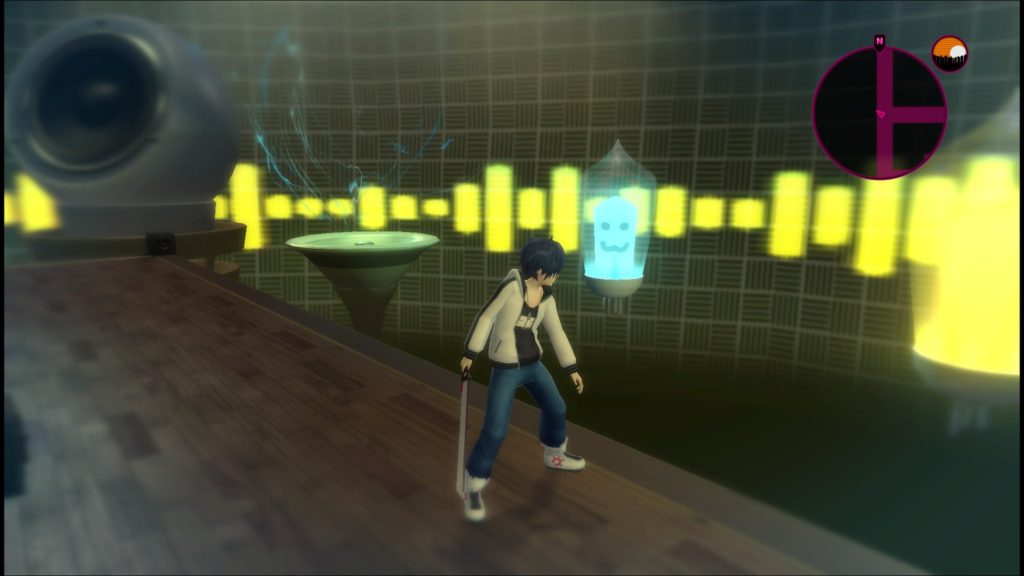- Genre: Puzzle/Platformer
- Platform: PS4
- Also Available On: Windows/Mac/Linux PC (Steam, GOG), PS3, Vita, Wii U, Xbox One
TL;DR
- Fantastically well crafted puzzle/metroidvania style game
- Interesting sci-fi driven story presented with a light touch, invites players to connect a lot of dots on their own
- Great visual style based on a unique clay-model construction
The Swapper at its core is a game that derives straight from its title. You play a lost explorer that finds a tool allowing them to create and swap with exact clones of themselves. This is wrapped in a set of pretty simple mechanics and a Metroidvania-esque traversal that expand out into a huge amount of puzzle depth. This is combined with some good visuals, and a simple but effective audio backing to create a really fantastic game.
When dealing with a puzzle game, the obvious question is whether or not the mechanics work to create interesting puzzles, and in this case, the answer is a resounding yes. The swapper tool that the player has can only spawn new clones (to a limit of player + 4 clones) and shoot a projectile to swap to a clone. Clones then all follow the same inputs that the main player character is doing, moving as a largely controlled herd. However, the lighting in the levels can disable these abilities; blue lights disable clone creation, red lights disable swap projectiles, and purple disables both. On its own, these combine to slowly ease you into the gameplay, with some of the early puzzles being some clever mix, with the player creating and moving around to platforms that are out of reach of just plain jumping.
One of the first things I noticed when I got the tool is that when I was creating clones, the game would go into a super slo-mo state. At first this didn’t make much sense to me, until the puzzles started requiring multiple swaps in mid-air, then it became another fantastically fun ability to use. Later puzzles started introducing gravity manipulation and pressure pads, mixing all of them together into rooms where the control of your clone herd became the ultimate goal. By the end of the game, the puzzles were becoming a devious mix of creating clones, warping between them, and finding ways to either recombine with or kill clones in order to keep up completion of the puzzles.
The puzzles are backed by a really strong visual style. One of the things that brought this game so much acclaim was that they quite literally created clay models for their source art, and that’s very apparent while playing. The lighting they used was typically extremely dark, allowing for a great use of a flashlight to lead the path in hallways, then the strong colored lighting for puzzle mechanics. I’ve thrown just a few screenshots I took below to give an idea of what the game looked like, though it certainly looks even better in motion.
It’s also worth noting that this has one of the more hilariously fucked up story endings I’ve ever played.
Given the core gameplay concept, it’s not too big of a surprise that there’s the possibility of swapping with other people, and there were some hints throughout that it had already happened. The end of the game takes full advantage of that. After crash landing on the planet below, a rescue ship finally finds you, but cannot rescue you due to lack of quarantine facilities. The game presents you with two options, die on the planet alone, or swap with the rescuer without anyone knowing what happened. The second option then takes this a step further, and gives you control of the rescuer you swapped with, causing him to fall off of a cliff to his death. Because of the rescue ship’s lack of knowledge of the swapping device, they simply saw it as the player character jumping off a cliff as a suicide.
In the end, hilariously unexpected, and a pretty fantastic way to wrap up the core mystery behind how you were going to actually get home.
In general, I was somewhat caught by surprise by how much I enjoyed this game. I’m generally a fan of Metroidvania-style games anyway, but without combat I wasn’t sure where this would fall fgor me. However, the game had a really smart difficulty curve, introducing one or two mechanics, then doing a series of puzzles to reinforce the new mechanics. Ultimately, there were probably 30 or so puzzles to complete, interspersed with general traversal where story elements were introduced, and it felt pretty appropriate in length. As far as puzzle-based games go, I can’t think of another I’ve played lately that I’d recommend as much as this unless I go back to Box Boy 3, and I think that says all that I need to say about it.

